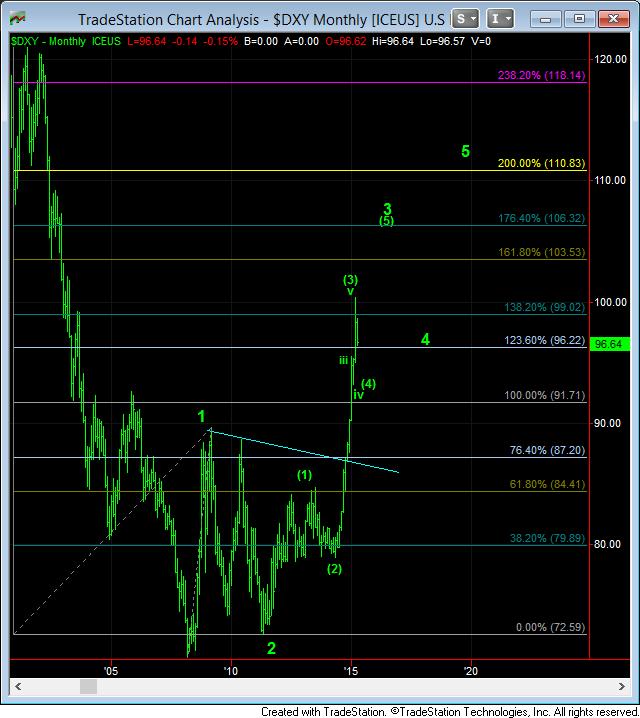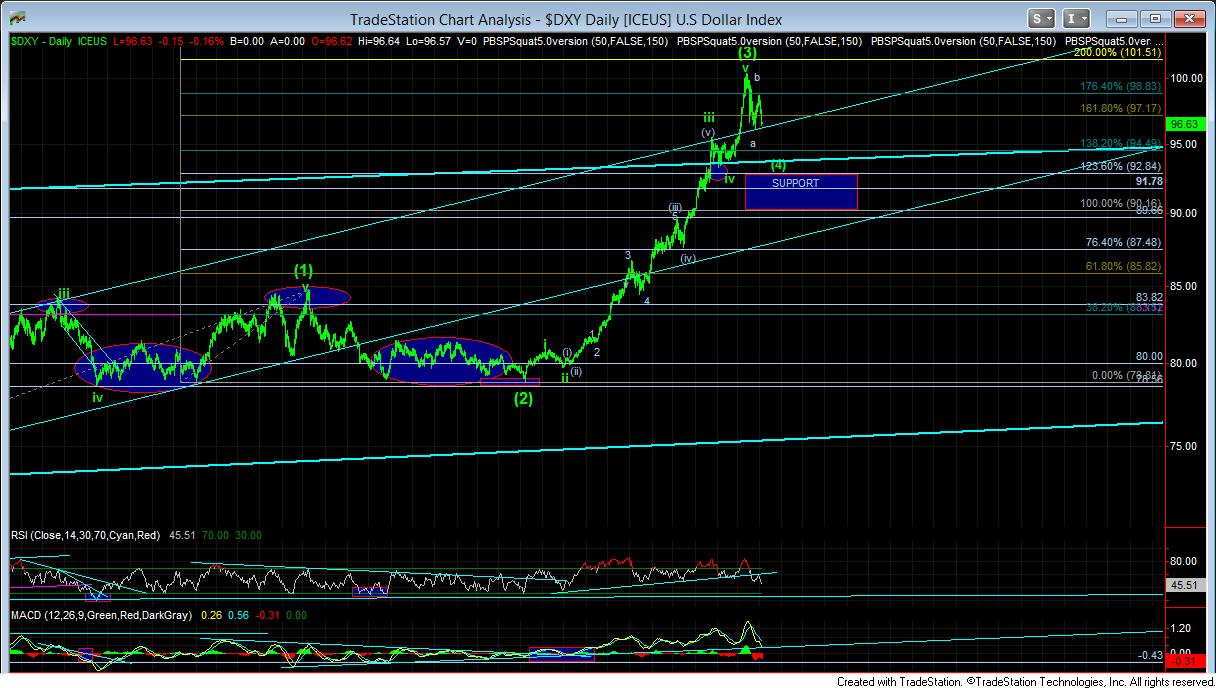Inter-Market Correlations Can Disappear/Change Quickly
Inter-Market Correlations Can Disappear/Change Quickly
What happened to the dollar/gold correlation?
by Avi Gilburt
[BigTrends.com note: We've previously discussed that there are no 'set in stone' correlations between various asset classes and commodities -- so in general when you see people discussing a correlation between the dollar, gold, oil, stock, bonds, etc, just remember that these tend to be temporary and can de-couple at any time. This also applies in a broad sense to correlation between various market indexes (including international), stock sectors and individual stocks.]
One of the basic tenets of inter-market analysis suggests that one invest based upon various "correlations" between different markets. The understanding is that when one market moves in one direction, we "should" see a correspondingly opposite move in an inversely "correlated" market. Many have used the bond market in such a manner in relation to the equity market, and many have used the U.S. Dollar (USD) (UUP) relative to the Gold (GLD) market.
But one of the biggest issues with using such seeming "correlations" is that they disappear just as quickly as they appear. When the markets seemingly decouple, an inter-market analyst is left scratching his head. Over the last few years, we have seen such decoupling in many markets. Paradigms seem to be shifting, and unless you have the tools to recognize those shifts before they occur, you may be left holding the bag, along with serious losses in your account.
One such "correlation" which has been turned on its head is the U.S.-dollar-to-gold correlation. Back when quantitative easing (QE) was first announced and instituted, the common perception was that it was the death knell to the USD, whereas gold would reap huge gains. With the benefit of history, it is quite clear that neither was the case. In fact, we witnessed just the opposite effect in both the dollar and the metals.
Now, after many QE programs, in addition to Operation Twist, the dollar has clearly not rolled over and died, as some thought would happen. Rather, we are simply following through in what the market told us it was going to do back in July of 2011. And, yes, those participants who expected the "obvious" death to the dollar have been proven wrong.
Adding insult to injury for those playing the dollar market against the gold market, the relationship between the two markets themselves has broken down of late. Look at the time period between November 2014 and February 2015. We witnessed a parabolic rally in the USD, while gold also rallied almost 14%. How many expected that?
It is easy to say, "well, that is only a three-month period of time, so one cannot really make any decisions based upon that perspective." From a pure relative time frame, I would not argue with you. But when the dollar goes through the most parabolic upside move we have seen in years at the same time that gold rallies 14%, you cannot simply ignore such a move because it happened within a short period of time. One can blow up their entire account being wrongly positioned on a move like that while hoping for the old correlations to apply, even if it is only within a three-month period of time.
The point I am trying to make is that correlations come and go without any warnings. Unless you have the tools to be able to predict when those seeming correlations will cease, you had better know how to use stops on all your trading and investment instruments. Otherwise, you will be left holding a bag full of losses, while scratching your head and wondering what happened. It is for this reason that I always suggest one analyze each market on their own for their own merit, and to avoid using any seeming correlations or inter-market analysis as a heavily weighted tool in your investment analysis arsenal.
As I have written many times over the last year, we are approaching a period of time during which we will be seeing paradigm shifts in the equity, bond and metals markets. And unless you are prepared for those paradigm shifts, you may wind up on the wrong side of many different markets, while hoping for old correlations to continue to apply.
Charts illustrating the wave counts of the USD:
Courtesy of marketwatch.com and elliottwavetrader.net


